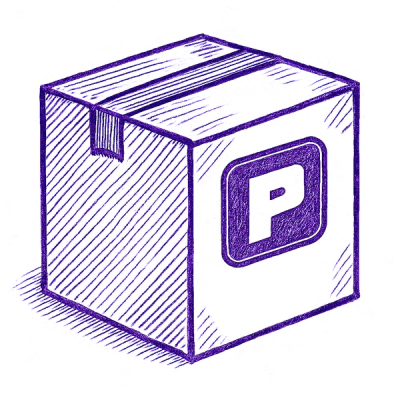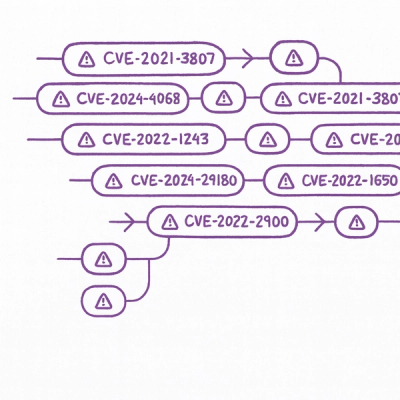
Security News
Astral Launches pyx: A Python-Native Package Registry
Astral unveils pyx, a Python-native package registry in beta, designed to speed installs, enhance security, and integrate deeply with uv.
create-laju-app
Advanced tools
A high-performance TypeScript web framework combining HyperExpress, Svelte 5, and Inertia.js for building modern full-stack applications. Features server-side rendering, real-time capabilities, and seamless client-server state management.
A high-performance TypeScript web framework combining HyperExpress, Svelte 5, and Inertia.js for building modern full-stack applications. Features server-side rendering, real-time capabilities, and seamless client-server state management.
Visit laju.dev
Run the following command
npx create-laju-app project-name
To start the development server:
npm run dev
This will:
To build the application for production:
npm run build
This command will:
/app - Core application files
/middlewares - Custom middleware functions/services - Service layer implementations/controllers - Application controllers/resources - Frontend resources
/views - Svelte components and views/js - JavaScript assets and modules/routes - Route definitions/migrations - Database migrations/public - Static files/dist - Compiled assets (generated)/build - Production build outputnpm run dev - Start development servernpm run build - Build for productionISC License
This tutorial will guide you through building a simple application using this framework.
First, let's create a new route and controller for a blog post feature.
app/controllers/PostController.ts:import { Request, Response } from "../../type";
import DB from "../services/DB";
class Controller {
public async index(request: Request, response: Response) {
const posts = await DB.from("posts");
return response.inertia("posts/index", { posts });
}
public async create(request: Request, response: Response) {
return response.inertia("posts/create");
}
public async store(request: Request, response: Response) {
const { title, content } = request.body;
await DB.table("posts").insert({
title,
content,
created_at: Date.now(),
updated_at: Date.now()
});
return response.redirect("/posts");
}
}
export default new Controller();
routes/web.ts:import PostController from "../app/controllers/PostController";
// Add these routes with your existing routes
Route.get("/posts", PostController.index);
Route.get("/posts/create", PostController.create);
Route.post("/posts", PostController.store);
Create a migration for the posts table:
npx knex migrate:make create_posts_table
In the generated migration file:
import { Knex } from "knex";
export async function up(knex: Knex): Promise<void> {
await knex.schema.createTable('posts', function (table) {
table.increments('id').primary();
table.string('title').notNullable();
table.text('content').notNullable();
table.bigInteger('created_at');
table.bigInteger('updated_at');
});
}
export async function down(knex: Knex): Promise<void> {
await knex.schema.dropTable('posts');
}
Run the migration:
npx knex migrate:latest
resources/views/posts/index.svelte:<script>
export let posts = [];
</script>
<div class="max-w-4xl mx-auto p-4">
<div class="flex justify-between items-center mb-6">
<h1 class="text-2xl font-bold">Blog Posts</h1>
<a
href="/posts/create"
class="bg-blue-500 text-white px-4 py-2 rounded hover:bg-blue-600"
>
Create Post
</a>
</div>
<div class="space-y-4">
{#each posts as post}
<div class="border p-4 rounded">
<h2 class="text-xl font-semibold">{post.title}</h2>
<p class="mt-2 text-gray-600">{post.content}</p>
</div>
{/each}
</div>
</div>
resources/views/posts/create.svelte:<script>
import { router } from '@inertiajs/svelte';
let form = {
title: '',
content: ''
};
function handleSubmit() {
router.post('/posts', form);
}
</script>
<div class="max-w-4xl mx-auto p-4">
<h1 class="text-2xl font-bold mb-6">Create New Post</h1>
<form on:submit|preventDefault={handleSubmit} class="space-y-4">
<div>
<label class="block text-sm font-medium mb-1">Title</label>
<input
type="text"
bind:value={form.title}
class="w-full px-3 py-2 border rounded"
/>
</div>
<div>
<label class="block text-sm font-medium mb-1">Content</label>
<textarea
bind:value={form.content}
class="w-full px-3 py-2 border rounded h-32"
></textarea>
</div>
<div>
<button
type="submit"
class="bg-blue-500 text-white px-4 py-2 rounded hover:bg-blue-600"
>
Create Post
</button>
</div>
</form>
</div>
npm run dev
http://localhost:5555/posts in your browserroutes/web.ts using the HyperExpress routerFile Organization
app/controllersresources/viewsmigrationsCode Structure
Database
Need help with anything specific? Feel free to ask!
FAQs
A high-performance TypeScript web framework combining HyperExpress, Svelte 5, and Inertia.js for building modern full-stack applications. Features server-side rendering, real-time capabilities, and seamless client-server state management.
The npm package create-laju-app receives a total of 2 weekly downloads. As such, create-laju-app popularity was classified as not popular.
We found that create-laju-app demonstrated a healthy version release cadence and project activity because the last version was released less than a year ago. It has 0 open source maintainers collaborating on the project.
Did you know?

Socket for GitHub automatically highlights issues in each pull request and monitors the health of all your open source dependencies. Discover the contents of your packages and block harmful activity before you install or update your dependencies.

Security News
Astral unveils pyx, a Python-native package registry in beta, designed to speed installs, enhance security, and integrate deeply with uv.

Security News
The Latio podcast explores how static and runtime reachability help teams prioritize exploitable vulnerabilities and streamline AppSec workflows.

Security News
The latest Opengrep releases add Apex scanning, precision rule tuning, and performance gains for open source static code analysis.